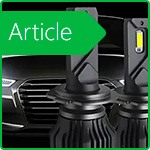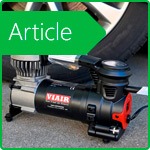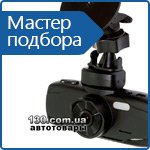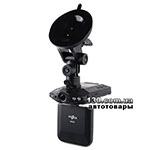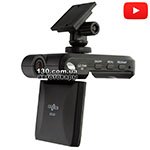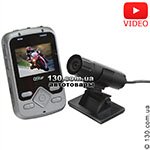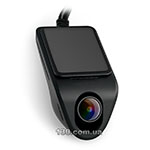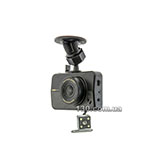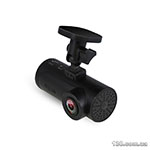CPL filter in the DVR, how does it work?
When using a DVR, each driver wants a clear and well-readable image, so manufacturers are constantly working to improve the quality of the picture. One of the improvement methods is the use of polarization filters (CPL, "circular polarizer lens"), which help to even out the brightness and remove glare and highlights from the image.
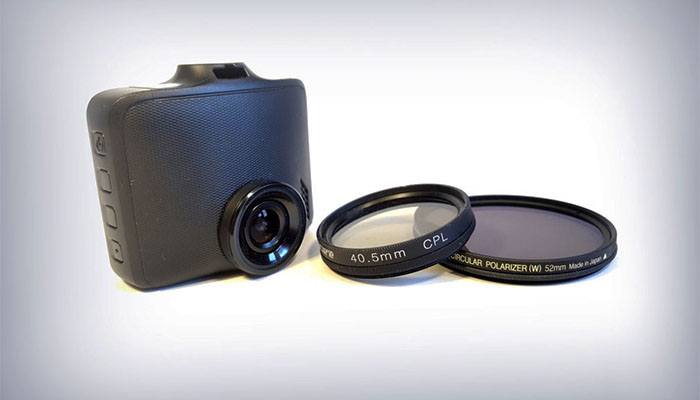
Now you can buy a registrar with the CPL filter installed, or pick it up separately and install it on the lens later if it has a special thread. In addition, almost all modern devices, even if they do not have an external filter, usually have a special polarizing coating on the lens. Let's look at how the polarization filter works and how it affects the quality of the video.
Features of the work of polarizing filters
A CPL filter is a special optical device used to receive fully or partially polarized radiation with arbitrary polarization characteristics. Their main purpose is to protect the video from the appearance of some defects, for example: light, glare of the sun's rays, reflection and others. Such a filter can easily eliminate reflections and glare on water and glass surfaces, however, if there is light reflected from a metal surface, it can hardly help. The second interesting effect of the use of a polarizer is to enhance the contrast and color saturation. It should also be borne in mind that installing such a filter on the camera lens of the car recorder, of course, helps to improve the quality of shooting in the daytime, but at night there will not be much difference.
A polarizing filter is not a new device; its effect has been known for a very long time. Initially, such filters were used by photographers to remove unwanted flare from the frame, increase the saturation of the image, increase its contrast, etc. This is due to the fact that in the frame, any object is a reflective surface for sunlight, and these reflections always have a very negative effect on contrast.
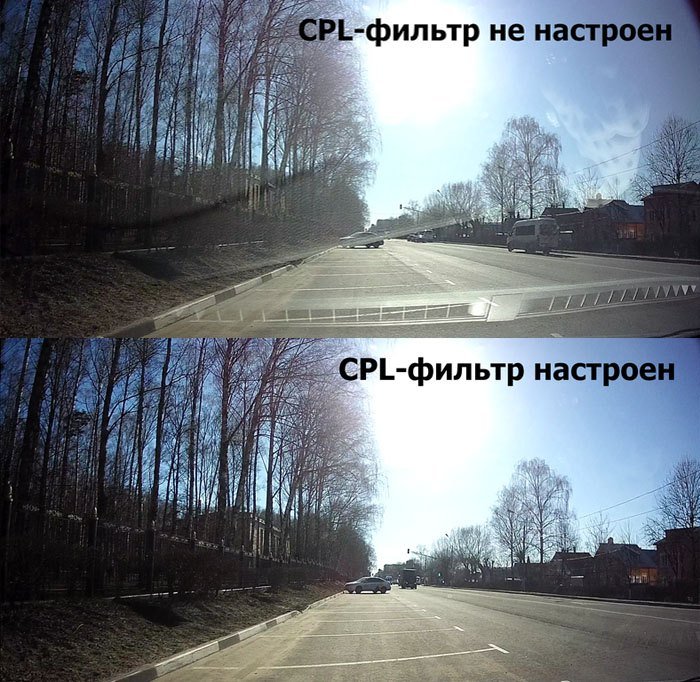
As for car recorders, one of the goals of installing a CPL filter is to eliminate reflections from the windshield. Drivers often notice on the records the reflection of the car dashboard, as well as everything that lies on it: lighters, key rings, coins, smartphone and much more. These reflections from the glass can accompany every shot. Of course, for some cars the angle of the panel is such that the reflection on the video is not noticeable, but sometimes it can occupy almost half of the screen. This creates certain inconveniences when viewing, especially in cases where the reflection makes it difficult to see the number of the vehicle in the frame, which can directly go into the exposure area.
External CPL filter or polarization coating?
For drivers, the question often arises: why install an additional external filter on the car DVR when almost all manufacturers of video recording devices use lenses with a special polarization coating when creating their products.
Of course, such an integrated filter partially eliminates the problems associated with glare on the windshield, but still it is ineffective, because there is no possibility of its regulation and adjustment. At the same time, the glass of the external polarizing filter is adjusted if necessary, rotating it, you can choose the optimal position in which it can remove almost all glare and light, that is, the picture will be as clear as possible without interference.
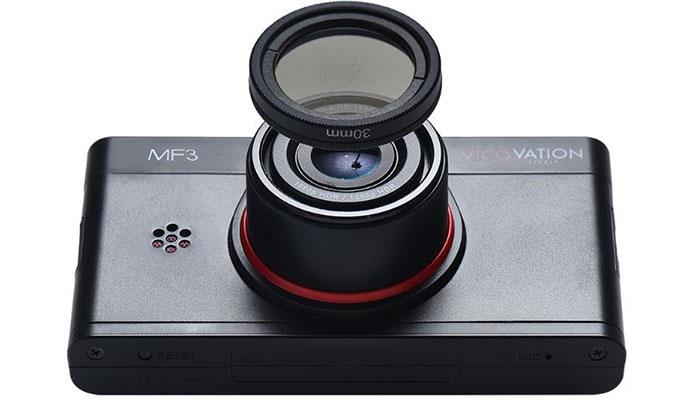
A few tips on how to use the CPL filter correctly
If you want to get the maximum effect from using a polarizing filter, then pay attention to some tricks:
- When setting up the CPL filter, you need to rotate it very slowly and watch carefully so that do not skip the point at which glare reduction will be maximized. As a rule, more than 90 degrees, you do not need to turn the filter. Please note that turning 180 degrees from the original position returns the image to its original state.
- In most car DVRs, the screens are quite small and not always very high quality, as they are used only for quick viewing. To add to this the fact that the car is parked against the light, then on the display of the dashboard on the display of the registrar, most likely, it will not be visible at all. And adjusting the filter will be very problematic, since it is impossible to find the point of suppression of glare or it is not fully detected. And as a result, the captured frames when viewed on a larger quality monitor (on a PC, TV and even a tablet) will have a huge number of reflections that are clearly visible and interfere. But there is a method that will solve this problem. To make the glare better visible on the recorder’s screen when setting up, put a small square piece of white paper on the dashboard and turn the filter until the white spot disappears on the screen.
- Inexpensive filters have the property of dimming the frame. Of course, high-quality CPL filters darken the picture very slightly, but such models are very expensive, they can even be more expensive than your car recorder, so it is not advisable to install them. In the daytime, in good light, the dimming does not carry any critical consequences and is noticeably not much. But when driving at dusk and in the dark, it is already clearly visible, so at night it is recommended to remove the filter from the lens of the DVR.
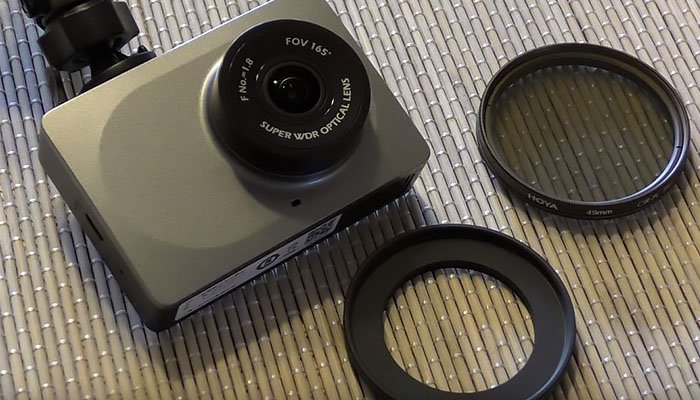
As you can see, the use of data by the filter is beneficial and makes the picture better. In the online store 130.com.ua you can buy a DVR with a polarizing filter in Kiev, Kharkov or Odessa at a bargain price. We have a large selection of registrars with good features from leading manufacturers.
Related Materials:
Video recorders: Best Sellers

Stay tuned for updates!
Subscribe to our Telegram channel and be the first to receive useful materials.
Subscribe









